Three Varieties of the 1822 Iturbide Eight Reales
by Ricardo de León Tallavas
Article 2 of Iturbide’s decree of 11 June 1822 described the obverse and reverse, legends and dispositions of emblems and symbolism while article 6 specified that no variation in fineness or weight would appear in this new Mexican coinage, thus continuing to obey Spain’s last regulations
The first series were obviously in silver and mainly coined in the 8 reales denomination. As soon as this new issue appeared several weeks later, the press and the public’s opinion very quickly stopped that design. Iturbide’s bust and eagle lack any kind of former Spanish quality and this was the main cause for the general written complaints. Almost from the start this first design was being replaced by another more suitable issue, with a refined bust and eagle on them; to be replaced yet again by the last design of complete legends by the end of 1822. We have several known and very well documented varieties of the last two issues (KM-306.1, KM-306.2, KM-307, KM-308 and KM-309), by the legends dispositions, bust style, crown style and their combinations of obverses and reverses.
However, there is not a single variety listed for the first issue of 8 reales (KM-304). I happen to have three of them, all with minor expected differences due to the elements being punched by hand on the dies. You find minor position in the wing tips and where they point to in the legend. You find the logical difference in spacing between the letters or numbers, the re-punching or even correction due to the manual origin of their placement on the die.
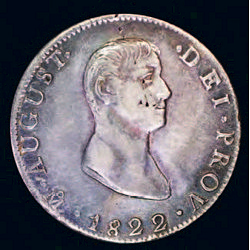
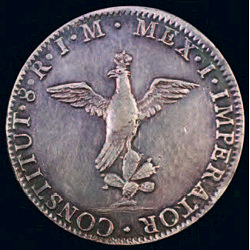
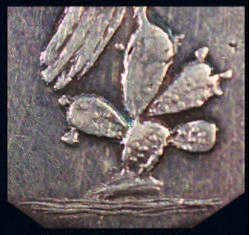
The first issue’s varieties reside in the design of three key elements: the cactus, the rocks and the water on the eagle’s side. The eagle literally looks like a chicken, being called “pollito” in Spanish for that very reason. The first style in this classification would be a very small tall rock, surrounded by waves positioned very close together with no more than five lines to represent the water. It shows five clearly placed prickly pears distributed in 2-1 (with spines re-engraved)-2 disposition.
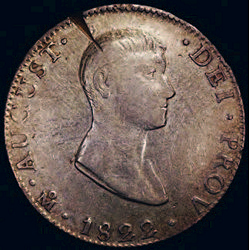
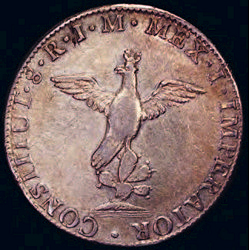

The second style shows a very thick elongated rock, the tips of the waves show three to possible a very faint fourth line and very well defined four lines at the end. The waves are much more separated lines and make a bigger space filled by them. It shows eight prickly pears distributed in 2-2-2-2 disposition.
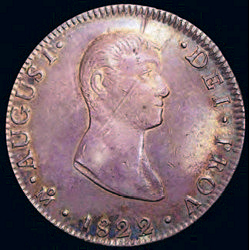
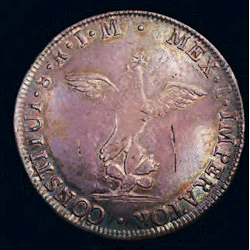

The third variety has three very thick compressed layers of waves on each side, a smaller and wide rock supports the Mexican cactus with seven prickly pears distributed in 2-3 (two very small and adjoined)-2 disposition.
The evidence shows, these are very distinctive varieties that have nothing to do with the position of a punch applied manually to a die, but rather in very specific and distinctive varieties. I doubt I have been lucky enough to get a representative of each one of all existing varieties for the KM-304, so this article is the stepping stone to start acquiring these varieties.
